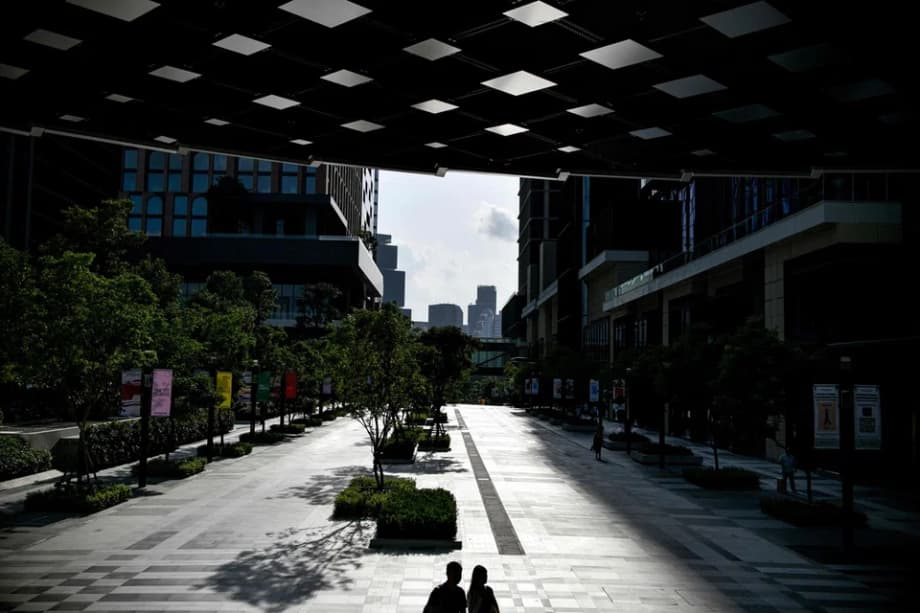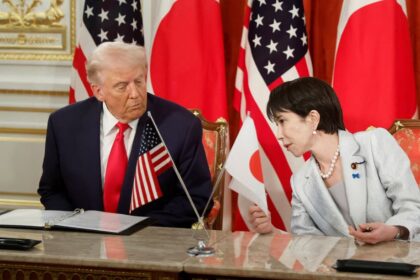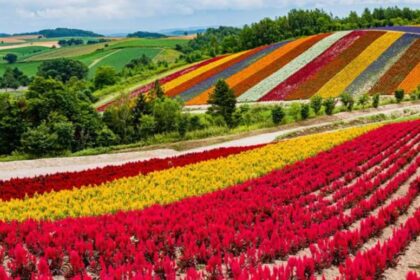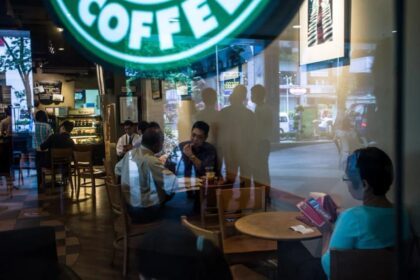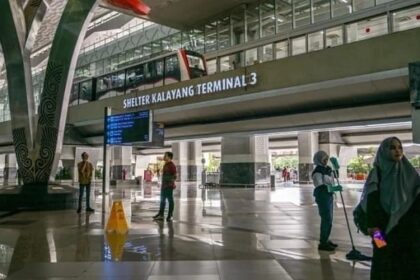Bangkok’s hottest conversation: Sukhumvit leads the pack
Sukhumvit has surged to the top of Bangkok tourism chatter among Thai social media users, according to recent social listening that tracked conversations across platforms between July 22 and September 22. The analysis, conducted by media intelligence firm Dataxet, found that 33 percent of Thai users expressed interest in visiting Sukhumvit, giving the district a clear lead in public attention. Social listening, a technique that aggregates and analyzes online posts and comments, captures what people are curious about, where they want to go next, and how they share those experiences with friends and followers.
- Bangkok’s hottest conversation: Sukhumvit leads the pack
- How social listening shapes travel choices
- What draws people to Sukhumvit
- Where else travelers are talking about
- The youth effect on Bangkok tourism
- Influencers and campaigns are steering demand
- Niche trends to watch
- What it means for visitors and businesses
- What to Know
Several elements push Sukhumvit to the front. The area is a compact showcase of modern Bangkok life, anchored by destination malls such as EmQuartier, Emporium, the newer EmSphere, and the ever popular Terminal 21. It offers a broad hotel mix from boutique stays to global luxury brands, along with direct connectivity via the BTS Skytrain and an easy interchange to the MRT at Asok and Sukhumvit stations. Benchakitti Park gives the district a green counterbalance to its high energy streets, and the neighborhoods of Thong Lor and Ekkamai bring an urban lifestyle mix of cafes, bars, creative spaces, and a community hangout at The Commons. While Sukhumvit leads, other districts register strong interest as well. Phra Nakhon ranks next, with social media users drawn to landmarks such as the Grand Palace and Wat Pho. A breakdown of discussion shares shows Phra Nakhon around 27.8 percent, Siam at 8.6 percent, Yaowarat at 7.9 percent, Ratchada Huai Khwang at 7.3 percent, Lat Phrao at 5.7 percent, Silom Sathon at 5.2 percent, and Dusit at 4.5 percent. These figures capture attention and intent expressed online, not physical foot traffic or spending, yet they offer a clear snapshot of where interest is rising.
How social listening shapes travel choices
Social listening gathers public comments about places, activities, and brands, then turns that stream into measurable signals. Analysts look for location mentions, sentiment, and the intent to visit in order to spot which districts and attractions are gaining momentum. Academic work supports this approach. A peer reviewed study of tourism related tweets in Thailand during the pandemic found that machine learning models could estimate both sentiment and the intention to visit with strong accuracy, with support vector machines performing well for sentiment and random forest for visit intent. That research focused on English language tweets and a limited time window, yet it demonstrates how social platforms can reveal shifting preferences in near real time.
Bangkok’s travel conversation often follows a loop that marketers describe as discover, discuss, decide, and deliver. TikTok and short video content spark discovery. Facebook groups and posts are used to ask questions and get advice. YouTube and long form content help people decide with deeper reviews and itineraries. Instagram and both short and long video formats capture the delivery stage, when travelers share the results of their plans. This cycle pushes high visibility neighborhoods like Sukhumvit to the top of mind for people planning a weekend out or an urban staycation, and it amplifies places that already have strong transport links, reliable amenities, and plenty to do within a short walk.
What draws people to Sukhumvit
There is a simple appeal behind Sukhumvit’s rise. It combines convenience, variety, and style in one corridor. The BTS Sukhumvit Line runs through it, station density is high, and many attractions sit within a few station stops of each other. Visitors can shop, eat, rest in a park, and meet friends for drinks without crossing the city. Hotels line the main road and side streets, so the jump from lobby to train to dinner takes minutes, not hours. That ease is what city travelers value most, and it shows up repeatedly in online posts about where to stay and how to plan a day in Bangkok.
Malls and retail magnets
Few districts pack the same retail weight. The EmDistrict cluster, including Emporium, EmQuartier, and EmSphere, draws shoppers with fashion, dining terraces, and frequent events. Terminal 21 layers themed floors and local designer stalls with a food court that many users praise for value and variety. Live events, short term exhibitions, and brand pop up concepts add a sense of constant change, which feeds the social media cycle and keeps people returning to see what is new.
Parks and green space
Benchakitti Park has transformed the area’s outdoor image. The expansion into a forest style wetland with boardwalks and viewpoints created one of the city’s most photogenic urban parks. Joggers and cyclists use it at sunrise and dusk, and visitors share skyline shots from the elevated paths. A pedestrian link connects the park toward Lumphini, which encourages longer walks and gives people an alternative to indoor plans on cooler days.
Nightlife and dining in Thong Lor and Ekkamai
Thong Lor and Ekkamai remain the capital of casual chic nights out. Cafes and patisseries open through the day, while cocktail bars and live music rooms fill in the evening. The Commons and nearby lanes pull a young crowd that prefers relaxed spaces with strong design, while restaurants run from street food favorites to chef driven menus. Posts about these neighborhoods often combine coffee, a late lunch, and a rooftop or late night bar in one sequence, which makes them a natural fit for short video storytelling.
Connected city life via BTS
Accessibility is a decisive factor in online planning threads. Sukhumvit benefits from fast connections on the BTS to Siam and the interchange with the MRT Blue Line. Travelers can visit Siam’s museums and malls, head south to Silom for a rooftop view, and return to a Sukhumvit hotel without lengthy transfers. That rhythm is easy to share and repeat, which is part of the reason Sukhumvit commands such a large share of conversation.
Where else travelers are talking about
Phra Nakhon sits just behind Sukhumvit in discussion share, and for good reason. It gathers Thailand’s most iconic sites within a compact area, from the Grand Palace and the Temple of the Emerald Buddha to Wat Pho and the reclining Buddha. Khao San Road brings nightlife and budget stays, while riverside walks, ferries, and the view across to Wat Arun give the district a strong day to night appeal. This is the image of Bangkok many visitors carry home, which keeps it high in the social conversation.
Siam is the city’s shopping nerve center, with Siam Paragon, Siam Center, Siam Discovery, and MBK pulling different crowds and price points. The Bangkok Art and Culture Centre adds exhibitions and workshops a short walk from the BTS interchange. Families mention Sea Life Bangkok Ocean World, and many locals treat Siam stations as a base for multi stop errands, brunches, and meet ups. Even with a smaller share of conversation than Sukhumvit, Siam remains the default gathering point for many Bangkok days out.
Yaowarat, or Chinatown, is a street food pilgrimage for first timers and repeat visitors. Mentions spike around night scenes, neon street views, and the growing interest in Songwad Road and nearby alleys for heritage buildings, coffee shops, and galleries. Wat Mangkon and the new generation of dessert and tea bars give the area a rounded draw. Ratchada Huai Khwang maintains its nightlife reputation with entertainment complexes such as The Street Ratchada and nearby venues. Lat Phrao benefits from value shopping at Union Mall and proximity to the Chatuchak Weekend Market and Rot Fai Park, which show up often in weekend planning posts.
Silom and Sathon combine business district energy with restaurants, hotels, and rooftops. The Mahanakhon SkyWalk remains a magnet for skyline photos, while large mixed use projects like One Bangkok and Dusit Central Park are adding fresh dining and cultural spaces. Dusit keeps a quieter profile, with mentions focused on museums and royal architecture such as the Ananta Samakhom Throne Hall and Wat Benchamabophit Dusitwanaram. Each district offers a distinct vibe, which is exactly what keeps Bangkok engaging for repeat visits.
The youth effect on Bangkok tourism
Recent analysis focused on younger travelers helps explain why Sukhumvit and similar districts are so visible online. Data drawn from a cross platform monitoring system found that lifestyle and cafe hopping dominate interest among young users at about 65.2 percent. Shopping and urban exploration make up 24.6 percent, experience based activities such as workshops and concerts account for 5.2 percent, cultural sightseeing stands at 3.4 percent, and nature outings represent 1.6 percent. The split aligns with what shows up in feeds. Photos of coffee, pastries, street fashion, and design focused interiors outperform standard sightseeing images, while short videos of mall events, rooftop sunsets, and night markets drive discovery.
Platform roles are distinct. TikTok leads discovery with short clips that make places feel immediate and easy to try. Facebook is the forum for advice seeking and checklists that refine those ideas. Instagram acts as the visual diary for sharing, and YouTube hosts deep dives into itineraries and hotel or cafe reviews. One model that describes this journey is a four step cycle, discover, discuss, decide, and deliver. Foreign tourists also contribute to the conversation, accounting for roughly one fifth of mentions. They often highlight Bangkok’s ease of movement via BTS and MRT, and they post about hotels, street food, spas, and massage services. For this audience, districts that blend visual appeal with convenience rise to the top quickly.
Influencers and campaigns are steering demand
Creators and local partnerships are now central to how tourism interest grows in Bangkok. Brands and venues increasingly pair with musicians, chefs, and lifestyle creators for short residencies, tastings, or limited menus. Bars host guest bartenders in a practice known locally as bar shifting, which brings new audiences and fresh content while giving venues a reason to promote a special night. Community wellness groups partner with consumer brands for runs and parkside activations, turning product sampling into social experiences people want to share.
Hotels are mixing experience design with creator collaborations to reach both locals and visitors during slower months. Food and beverage operators adopt concept cafes and fine dining spin offs that live comfortably on camera. National tourism marketing has moved in the same direction. The Tourism Authority of Thailand has rolled out an influencer matching platform known as TAT Connex to make it easier for businesses to find creators and track campaigns. Thailand is also testing demand shaping policies, such as a Q4 campaign that offers a pool of free domestic air tickets to international visitors. The goal is to nudge travelers to add secondary cities to their itinerary, which would spread tourism gains beyond familiar hubs. For Bangkok businesses, that can be an incentive to package city stays with side trips and to coordinate with partners outside the capital.
Niche trends to watch
A rising micro trend suits Bangkok’s food culture very well. Grocery tourism, the practice of visiting supermarkets and convenience stores to sample local products, has gone mainstream. A global travel report from Expedia says roughly 39 percent of travelers visit supermarkets on holiday and 44 percent seek out goods they cannot find at home. In Thailand, chains like Tops and Big C have leaned into this interest with snack aisles and souvenir friendly packaging that is easy to bring back. Processed durian, Thai chips and candies, and seasonal flavors can become short viral moments, which pull locals and visitors to try the same items and post their reactions.
Urban nature and hidden parks also draw steady curiosity, even if they account for a smaller share of mentions. Benchakitti’s new wetlands and elevated paths are already a regular feature in city guides, and Rot Fai Park stays popular with cyclists and photographers. Between these green pockets, a wave of small cafes and galleries has pushed into older shop houses and quiet lanes. These are the places users call hidden gems. When a creator posts a new patio cafe in On Nut or a vintage themed tea room near Phrom Phong, responses tend to be immediate and enthusiastic.
What it means for visitors and businesses
For visitors, Sukhumvit is a practical base for an urban weekender or a first trip. Plan around the BTS and MRT grid, build a day that mixes a park walk with a mall stop and a cafe or rooftop, and save time by choosing hotels near Asok, Phrom Phong, Thong Lor, or Ekkamai stations. If you want to venture deeper, plot a Siam stop for the art center and a Phra Nakhon segment for temples and the river. Chinatown is best in the evening when street food stalls are busiest.
For businesses, the social data points to two priorities. First, design experiences that photograph well and are easy to share. That can be a tasting flight, a compact workshop, or a small performance with a clear start and finish people can fit between other errands. Second, work with creators who align with the venue’s tone and audience. Authentic voices outperform generic promotion. Content should reflect local language trends and Thai festivities, while still welcoming the many foreign visitors who share reviews in English. Keep in mind that social listening captures conversation, not automatic sales. It is a guide to what people are curious about and a prompt to meet that curiosity with good service, value, and memorable details.
What to Know
- Sukhumvit leads Bangkok tourism chatter with about 33 percent of Thai social media users expressing interest in visiting during the July to September monitoring window
- The district’s appeal blends malls like EmQuartier, Emporium, EmSphere, and Terminal 21 with cafes, hotels, nightlife, and Benchakitti Park
- Other high interest areas include Phra Nakhon, Siam, Yaowarat, Ratchada Huai Khwang, Lat Phrao, Silom Sathon, and Dusit
- Young travelers favor lifestyle and cafe hopping content at roughly 65 percent of engagement, with shopping and urban exploration at about 25 percent
- TikTok drives discovery, Facebook hosts advice, YouTube supports decisions, and Instagram captures sharing
- Foreign visitors account for around one fifth of online mentions about Bangkok, often praising transport convenience and food experiences
- Influencer collaborations, creator led events, and community activations are reshaping how venues reach audiences
- The Tourism Authority of Thailand’s TAT Connex platform supports influencer matching and campaign tracking
- A national campaign offering free domestic flights to international visitors aims to spread trips to secondary cities beyond Bangkok
- Grocery tourism is rising, with travelers seeking Thai snacks at supermarkets such as Tops and Big C


